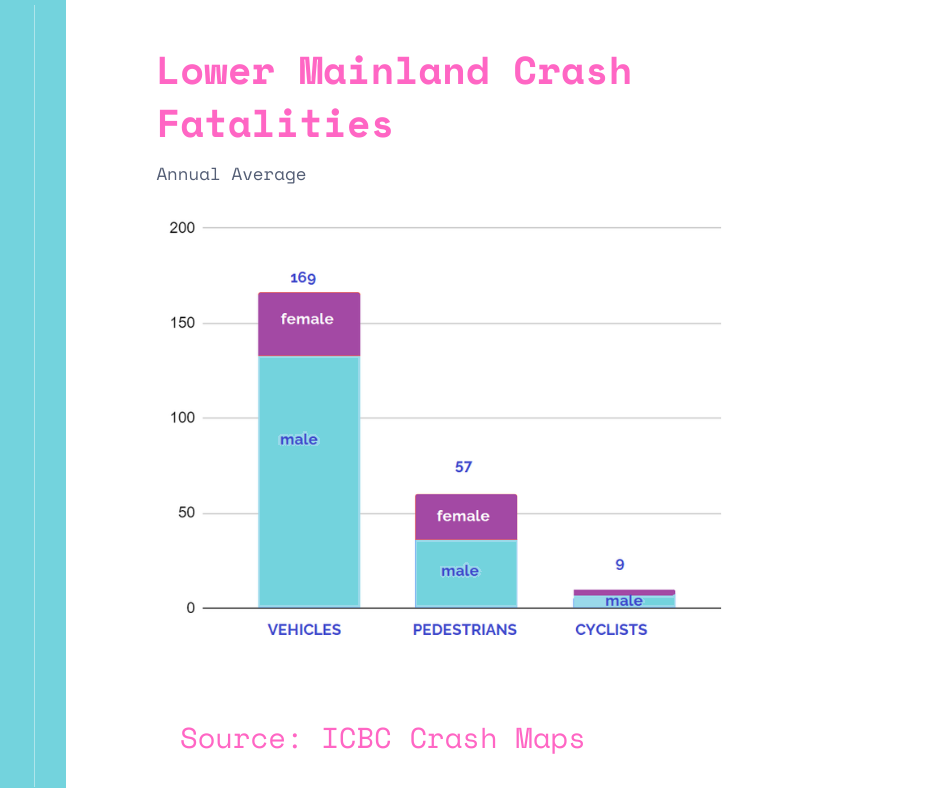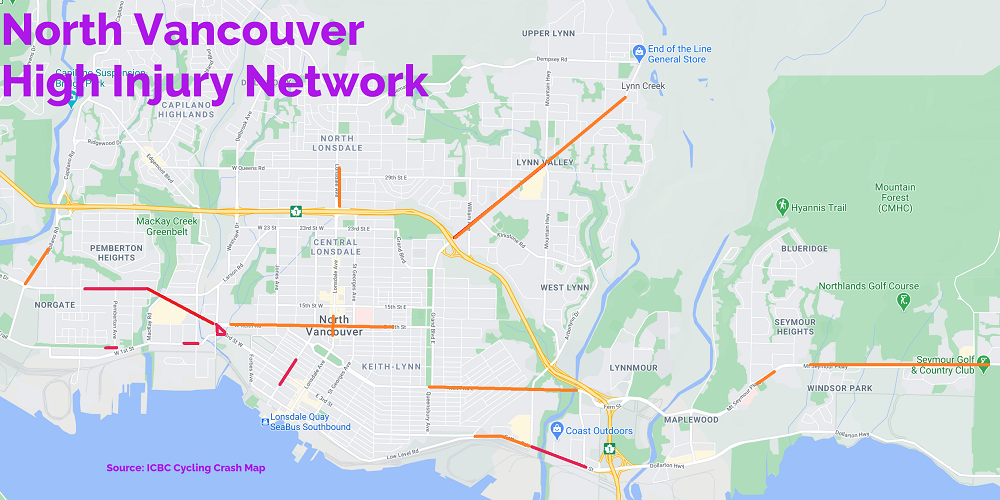Crashmap: Difference between revisions
imported>Heather Drugge No edit summary |
imported>Heather Drugge No edit summary |
||
| Line 3: | Line 3: | ||
[[File:HotRoutes North Vancouver2.png]] |
[[File:HotRoutes North Vancouver2.png]] |
||
This information |
This information illustrates crash information from the [https://public.tableau.com/profile/icbc#!/vizhome/BC-CrashesinvolvingCyclists-/CyclistsDashboard ICBC website]. |
||
ICBC counted the crashes involving people on bikes for five years, from 2015 to 2019. |
ICBC counted the crashes involving people on bikes for five years, from 2015 to 2019. The data file includes actual counts at different locations. |
||
Marine Drive and Main Street are high injury locations. No surprises there. But so was lower Chesterfield, which is surprising. |
Marine Drive and Main Street are high injury locations. No surprises there. But so was lower Chesterfield, which is surprising. |
||
The .pdf file below lists all the locations where crashes took place in North Vancouver. |
The .pdf file below lists all the locations where crashes took place in North Vancouver. |
||
| Line 11: | Line 11: | ||
The chart below shows the average number of people killed in crashes by transportation type. |
The chart below shows the average number of people killed in crashes by transportation type. Motor vehicle occupants are most at risk. |
||
The per 100,000 rate for vehicles is 6.3. The per 100,000 rate for bikes is .44. However, many more people drive than bike, so those numbers are not directly comparable.<br> |
The per 100,000 rate for vehicles is 6.3. The per 100,000 rate for bikes is .44. However, many more people drive than bike, so those numbers are not directly comparable.<br> |
||
[[File:Lower_Mainland_Crash_Fatalities.png]] |
[[File:Lower_Mainland_Crash_Fatalities.png]] |
||
The next chart shows the number of people killed in crashes by transportation type in North Vancouver and West Vancouver for the same 2015-2019 period. |
|||
Revision as of 22:49, 15 March 2021
This information illustrates crash information from the ICBC website. ICBC counted the crashes involving people on bikes for five years, from 2015 to 2019. The data file includes actual counts at different locations. Marine Drive and Main Street are high injury locations. No surprises there. But so was lower Chesterfield, which is surprising. The .pdf file below lists all the locations where crashes took place in North Vancouver.
File:Crash Locations - North Van.pdf
The chart below shows the average number of people killed in crashes by transportation type. Motor vehicle occupants are most at risk.
The per 100,000 rate for vehicles is 6.3. The per 100,000 rate for bikes is .44. However, many more people drive than bike, so those numbers are not directly comparable.

The next chart shows the number of people killed in crashes by transportation type in North Vancouver and West Vancouver for the same 2015-2019 period.
